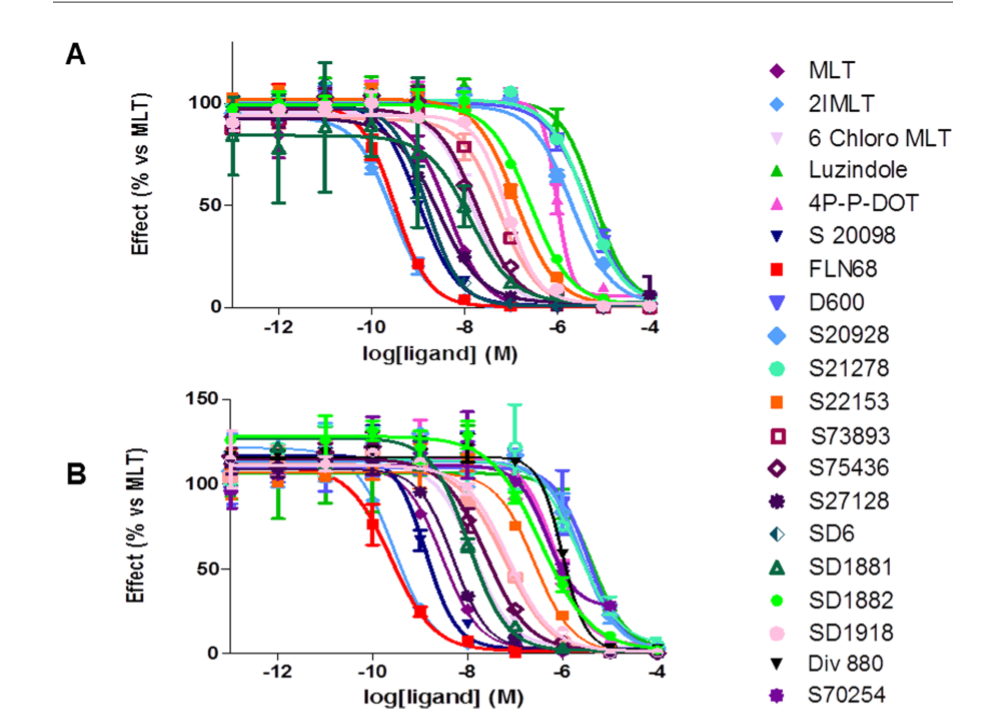 Melatonin is a neurohormone produced in both animals and plants. It binds at least three Gprotein-coupled receptors: MT1 and MT2, and Mel1cGPR. Mammalian GPR50 evolved from the reptilian/avian Mel1c and lost its capacity to bind melatonin in all the therian mammal species that have been tested. In order to determine if binding is lost in the oldest surviving mammalian lineage of monotremes we investigated whether the melatonin receptor has the ability to bind melatonin in the platypus (Ornithorhynchus anatinus), and evaluated its pharmacological profile. Sequence and phylogenetic analysis showed that platypus has in fact retained the ancestral Mel1c and has the capacity to bind melatonin similar to other mammalian melatonin receptors (MT1 and MT2), with an affinity in the 1 nM range. We also investigated the binding of a set of melatoninergic ligands used previously to characterize the molecular pharmacology of the melatonin receptors from sheep, rats, mice, and humans and found that the general profiles of these compounds make Mel1c resemble human MT1 more than MT2. This work shows that the loss of GPR50 binding evolved after the divergence of monotremes less than 190MYA in therian mammals
Melatonin is a neurohormone produced in both animals and plants. It binds at least three Gprotein-coupled receptors: MT1 and MT2, and Mel1cGPR. Mammalian GPR50 evolved from the reptilian/avian Mel1c and lost its capacity to bind melatonin in all the therian mammal species that have been tested. In order to determine if binding is lost in the oldest surviving mammalian lineage of monotremes we investigated whether the melatonin receptor has the ability to bind melatonin in the platypus (Ornithorhynchus anatinus), and evaluated its pharmacological profile. Sequence and phylogenetic analysis showed that platypus has in fact retained the ancestral Mel1c and has the capacity to bind melatonin similar to other mammalian melatonin receptors (MT1 and MT2), with an affinity in the 1 nM range. We also investigated the binding of a set of melatoninergic ligands used previously to characterize the molecular pharmacology of the melatonin receptors from sheep, rats, mice, and humans and found that the general profiles of these compounds make Mel1c resemble human MT1 more than MT2. This work shows that the loss of GPR50 binding evolved after the divergence of monotremes less than 190MYA in therian mammals
برای دانلود مقاله کلیک کنید.